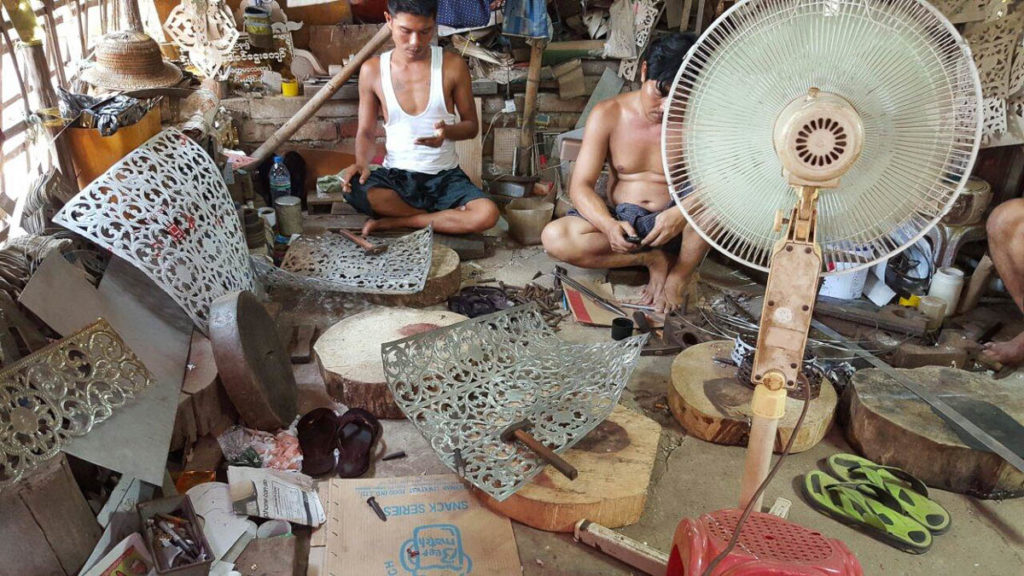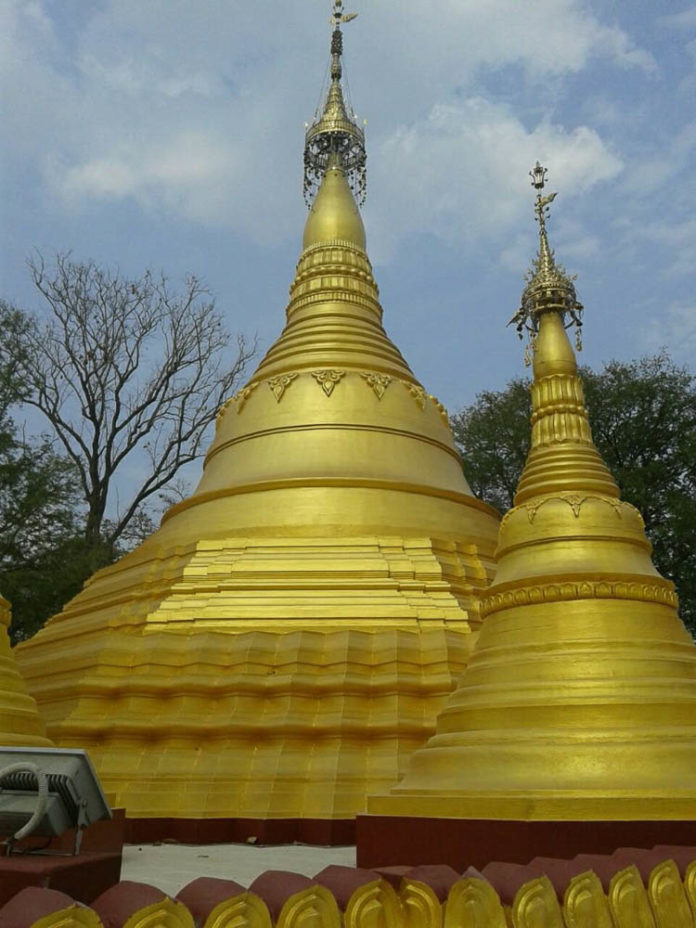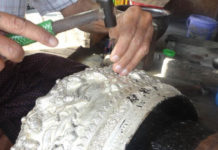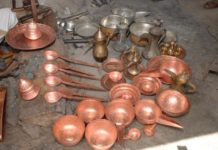Myanmar traditional craftsmanship is represented by “ten flowers”, which are as follow- blacksmith, bronze-smith, silversmith and goldsmith, stucco, monastery, sculpture, stone carving, turning designs on the lathe, painting and lacquerware.
Finial (hti taw) is one of the bronze crafts. The “finial” is an architectural feature also known as parason, sattravali (thattrabali) , varsastala, pinnaple and crow. Hti is the name of the finial ornament that tops almost all pagoda in Myanmar.
Moreover, finial (hti taw) is one of the oldest crafts, which is transmitted from generation to generation. The art of stupa finial was created in Myanmar, Sri Lanka, Laos and Thailand. The main raw materials are bronze, gold leaf and lacquer.

The processes of finial as follows. First, the design is drawn on the paper. Then the drawing paper is put on a bronze sheet or steel sheet. The bronze sheet is shaped or cut the extra space and welded together. Finally, the finial is sprayed with a gold colour and gold leaf is applied.
The hti taw ‘s top has precious stone, it is called the seinhpudaw (diamond bud). The diamond bud is carved to be 108 squares. 108 squares represent the footstep of Buddha. In early Innwa period (A.D. -1364-1555), Tadar- U Min Ga La Stupa’s finial (AD-1480) was made of iron, and then, latest period, Kongboung Period (AD – 1752-1885), it was made of bronze.
Finials are different types or forms, which are based on location and the donor (e.g. Normally, the donor is from shan state, he will donate the style of Shan.) There are four types of popular forms: Nine Terraces finial, Shwedagon finial, Maharwizaya finial and Sulay finial. Moreover, burma talaing ( burma – shan) and mon talaing (mon- shan) are famous designs.
The estimated cost of the finial is over 10,000,000 kyats ($US 7,000). Mr Sein Myint Aung is one of the masters from Yangon in Myanmar. At the age of 16, he has started to learn and gain recognition since 1974.





